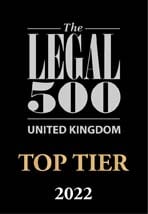Background
This recent High Court case concerned financial remedy proceedings brought by the wife (“W”, aged 43) against the husband (“H”, aged 47).
The parties were married for a length of 13 years. They had two children aged 3 and 9.
They began their relationship in 2006, and had cohabited prior to marriage for 18-24 months in a property solely owned by H (from his previous marriage).
In 2009, the parties moved out of H’s property. The property was rented out and managed by professional agents.
The parties remained in rented accommodation until 2013, when they purchased the family home in Kensington with a value of circa. £6million.
The parties both worked within the financial sector but, in 2016, H left his job to set up a business which had proved to be immediately successful. During this exact time, the parties had been living apart but spending time together. As set out in the judgment, ‘neither of them knew whether their marriage had a future but neither had given up on it’.
Towards the end of 2018, after attempts to try and reconcile, the parties had decided that the marriage was over.
The case contained a number of issues, including the true value of H’s business, but the two main issues faced by the court were;
- Was H’s property from his previous marriage a matrimonial or non-matrimonial asset?
W claimed that because the property was their first home together, and because she had primarily dealt with the paperwork of having it subsequently rented out, it became matrimonial in nature and should be treated as if the parties were jointly entitled to it.
The court found that this property had a ‘genuine but small’ matrimonial element in these proceedings, with 30% of its value being attributed as matrimonial and 70% being H’s sole interest.
- Whether or not the success of H’s business was post-separation?
H sought to argue that the very large sums of money that the business made in its first years of operation came about as a result of his efforts post-separation.
The court, having examined the nature of the parties’ relationship in between 2016 and 2018, concluded that ‘not only was the wealth received at a time whilst the marriage was still thought to be viable, but it was the reflection of work that had been done before the parties’ physical separation’.
It was also an important consideration in reaching its conclusion that part of the sums of money received by the business was used to pay off the mortgage of the family home.
Judgment reached
Having reached its conclusions on the above issues, the court ordered that there were sufficient matrimonial assets to meet W’s needs, leaving H the sole owner of the property from his previous marriage as well as him keeping the inheritance which he received from his mother.
Citing fairness, and having appreciation to the fact that that H’s company had little liquidity and operated in volatile markets, the court awarded W 35% of the overall assets consisting of the following;
- The family home;
- A lump sum of £9.3mill to be paid over 5 years;
- Nominal spousal maintenance order that was to be dismissed on payment of the lump sum in full;
- Child maintenance payments of £25,000;
- Nanny’s costs to enable W to work; and
- All ‘other expenses of living the comfortable, but not ostentatious, standard of living that the parties have enjoyed.’
For more information on the issues raised in this blog please do not hesitate to contact one of the team at Rayden Solicitors.













